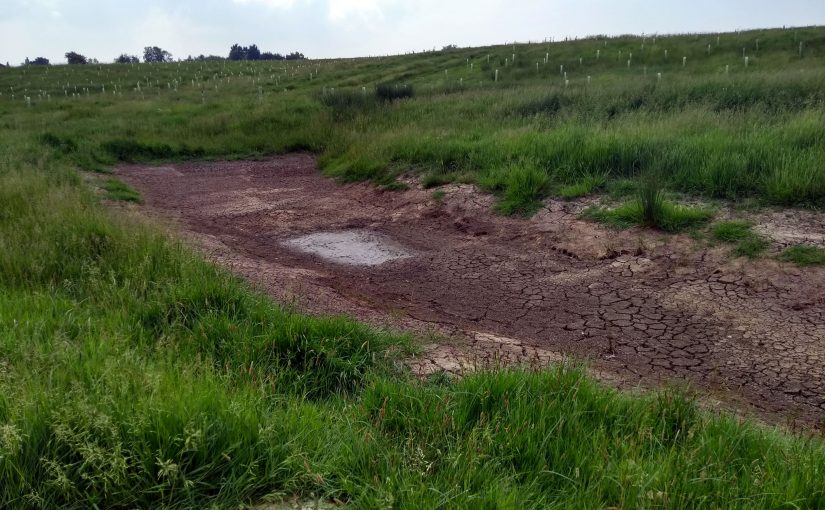Whilst clearing out are farm ponds last Autumn, whilst the digger was on site we also took the opportunity of putting in a series of wildlife ‘scrapes’.
Our scrapes quickly filled up with rainwater during one of the wettest winters on record.

The scrapes are just shallow depressions in the land with gently sloping edges, which (importantly) only seasonally hold water.
They create wet areas in the field that are very attractive to wildlife and support a wide variety of invertebrates that provide important feeding areas for breeding wading birds and their chicks as well as a watering hole for passing mammals.
The most important parts of scrapes for wildlife are the margins. Shallow water and muddy edges provide ideal conditions for wetland invertebrates and plants, and allow access for waders and their chicks to find food. Scrapes should hold
water from March ideally through to the end of June.
An invertebrate survey was done whilst the main ponds were being sampled. All three scrapes were teeming with life only a few months after being dug which begs the question where do they all pop up from?

Our cluster of three scrapes provides a variety of shapes and depths, designed so that each is at a different stage of it’s cycle at any one point in time during the breeding season. The middle one was the first to dry up in mid June after a prolonged dry spell but the other two still held water.

Update September 2018
Heavy overnight rain has meant standing water has once again returned to all of the scrapes. It’s only a bit but it is the start of the next cycle. I am just pleased they are doing exactly what they should do.

For the record (and our more sceptical readers) there were no grants received or stewardship schemes entered into etc. Just us doing our bit.

